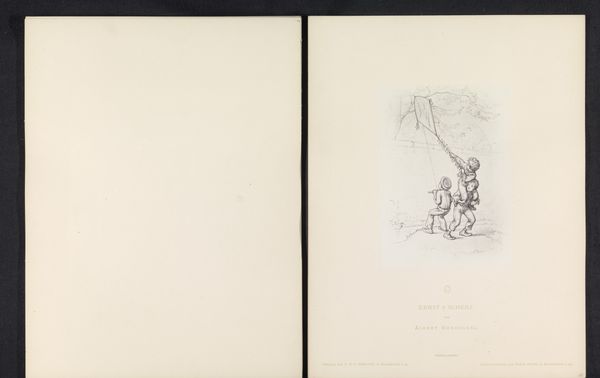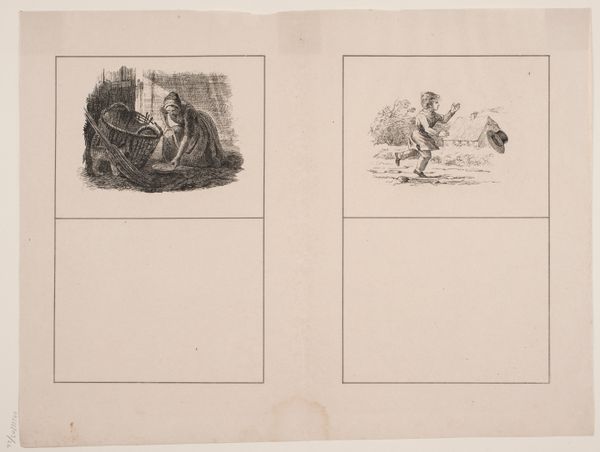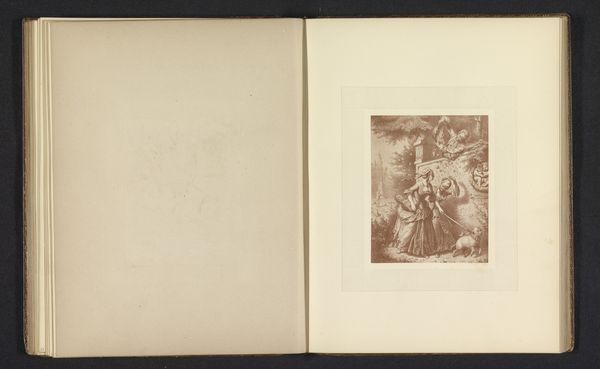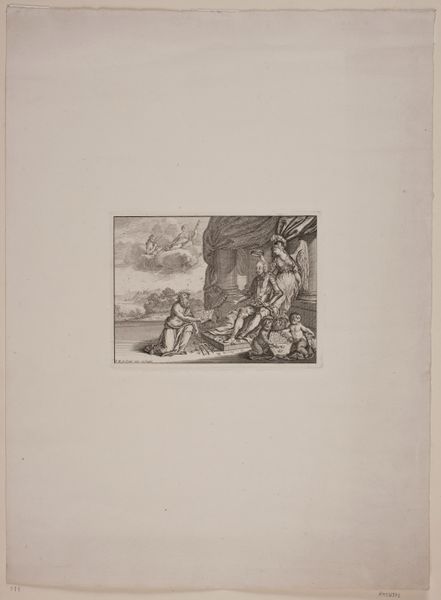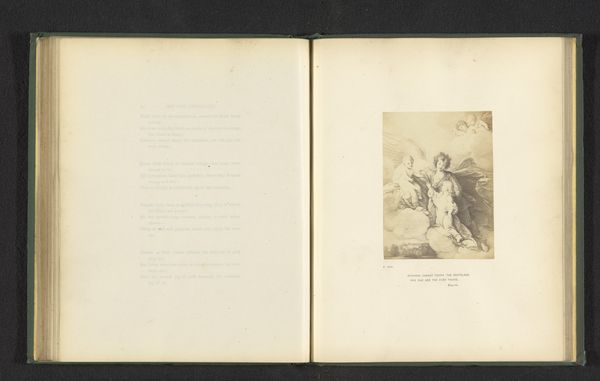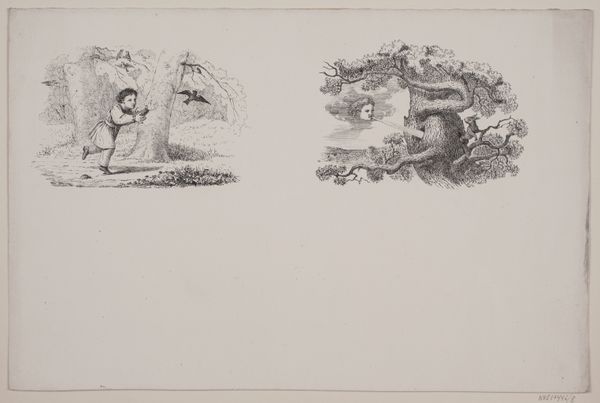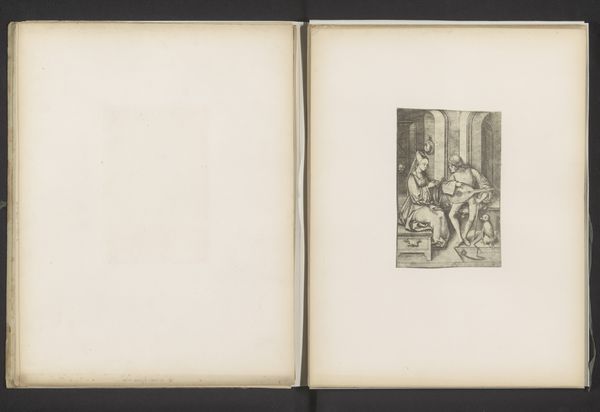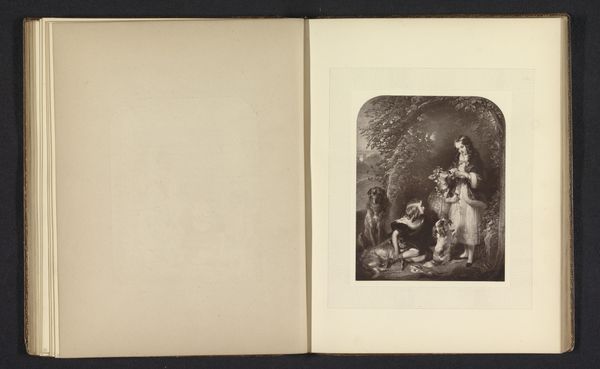
Fotoreproductie van een tekening van een jongen die salueert voor een soldaat bij een wachthuisje before 1879
0:00
0:00
drawing, pencil
#
portrait
#
drawing
#
pencil
#
genre-painting
#
realism
Dimensions: height 170 mm, width 152 mm
Copyright: Rijks Museum: Open Domain
Curator: Theodor Huth created this drawing, titled "Fotoreproductie van een tekening van een jongen die salueert voor een soldaat bij een wachthuisje," before 1879. It’s a genre scene, rendered with meticulous detail in pencil. What's your initial response to this work? Editor: It's deceptively simple. The limited tonal range from the pencil makes the image feel quite immediate, raw even. The subject matter gives off this kind of almost performative patriotism but the lack of colour makes it seem a bit grim and dull. It also feels strangely intimate. Curator: Intimate? In what way? I read it more as a social commentary. The clear distinction in class and status implied through the boy’s gesture to the soldier. Is this a sign of respect, of forced subservience? I’m interested in unpacking the power dynamics at play here. Editor: Well, perhaps intimate is the wrong word. The choice of pencil gives it a more personal feel. If this image were mass-produced, I imagine, that could give more of the formal message that I am perhaps projecting upon the piece. The way Huth meticulously crafts the soldier's uniform and contrasts that against the young boy's clothes. It seems there's attention being paid to how labor and military might manifest themselves. Curator: Absolutely, the contrast is stark, the drawing begs questions. What's also significant to me is how Huth chose to depict this everyday encounter. Genre painting often served to reinforce societal norms, yet here, there’s a subtle tension. Editor: Right. Is he examining this act or celebrating the military itself? The very act of capturing this interaction through a reproducible format could be read as promoting or demystifying it; a new consumption, new product to enjoy. Curator: Indeed, thinking about the accessibility and wider dissemination of this image opens new avenues. Who was the intended audience, and how did they perceive this interaction between citizen and state power? It reveals complexities around identity, duty, and early representations of class within civic society. Editor: I suppose what I am looking at as well is how Huth creates art that both can make art like portraiture seem approachable and commonplace whilst being technically sound and showing the value of skill of the artist, a constant source of wonder. It's still impacting even this material so long after its existence. Curator: A potent reflection on how social class can perpetuate cycles. Thank you for highlighting a different perspective. Editor: It's crucial that we keep talking, and keep exploring the relationship between those classes.
Comments
No comments
Be the first to comment and join the conversation on the ultimate creative platform.
